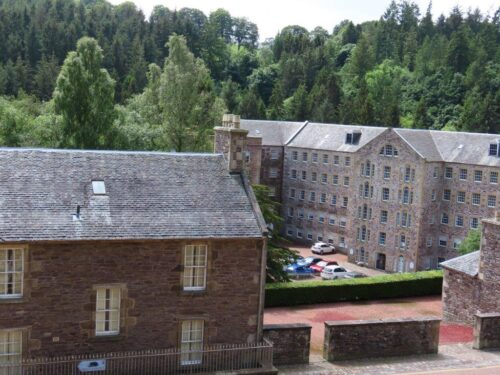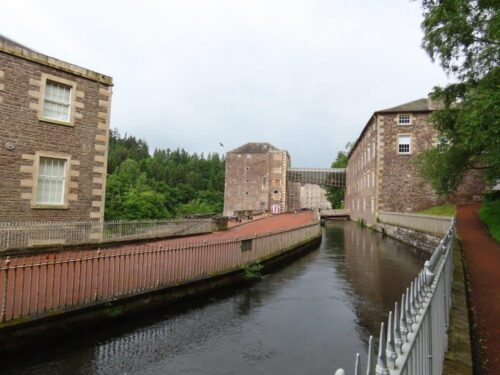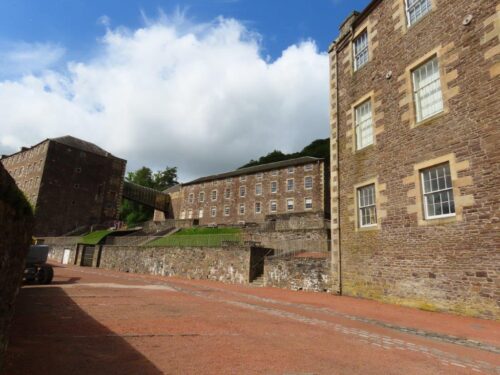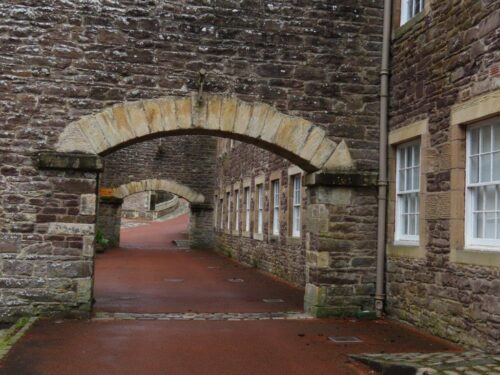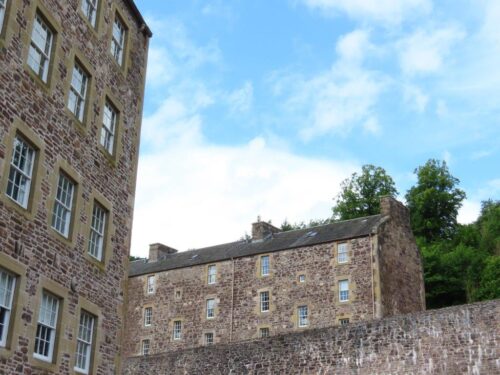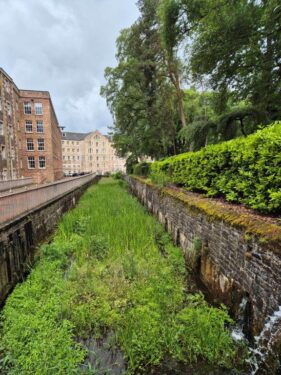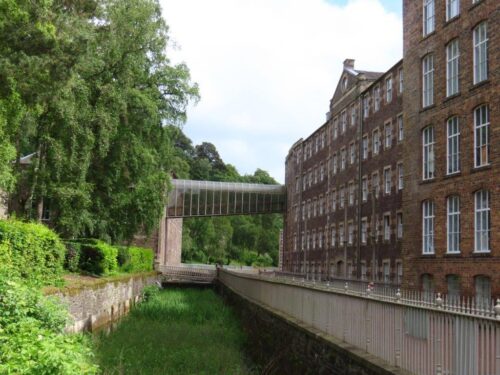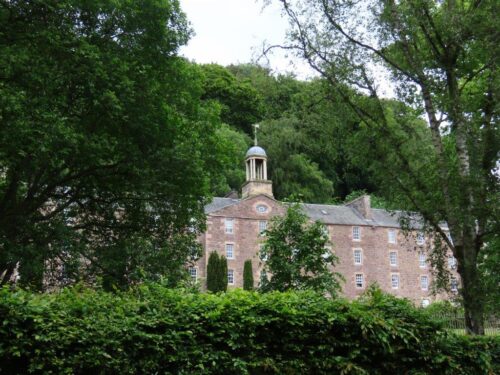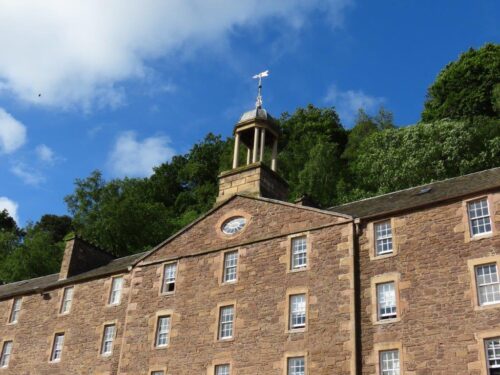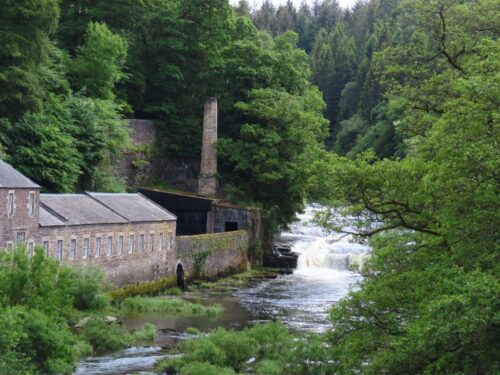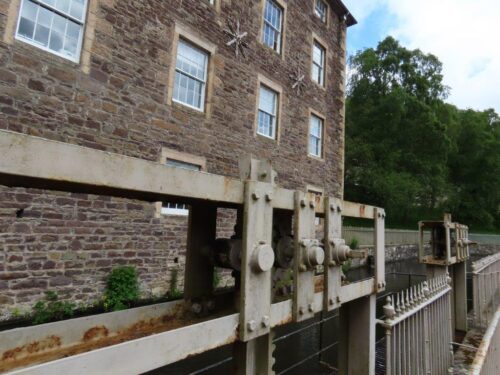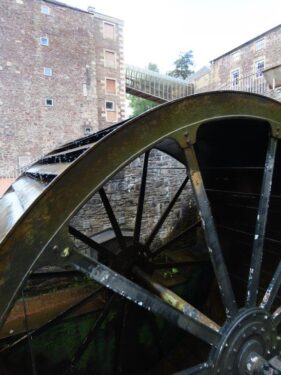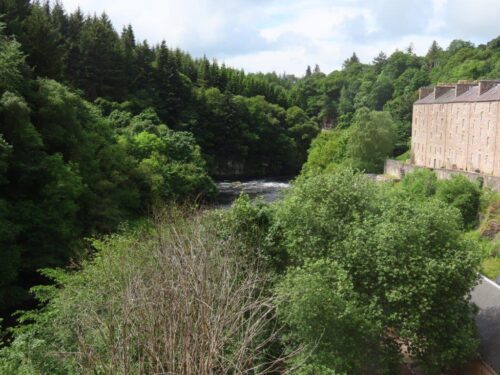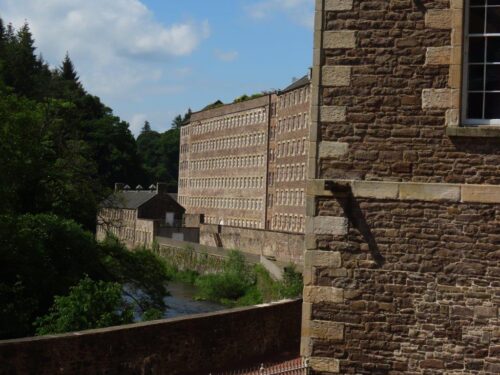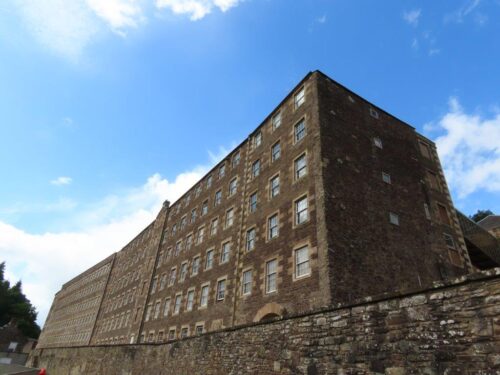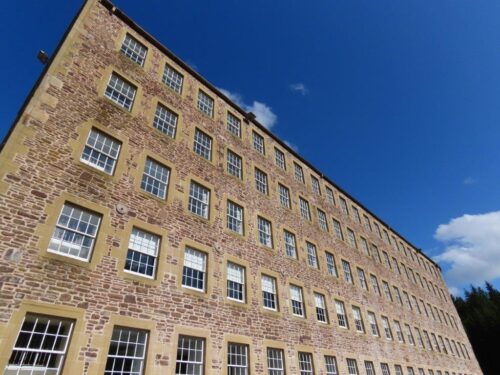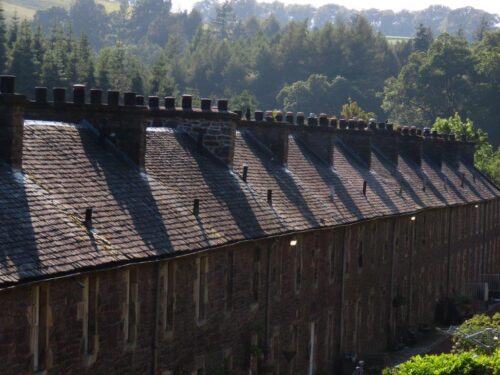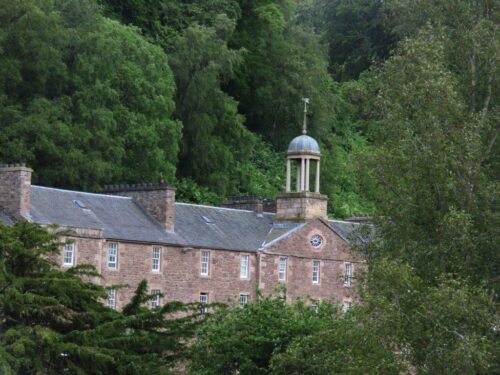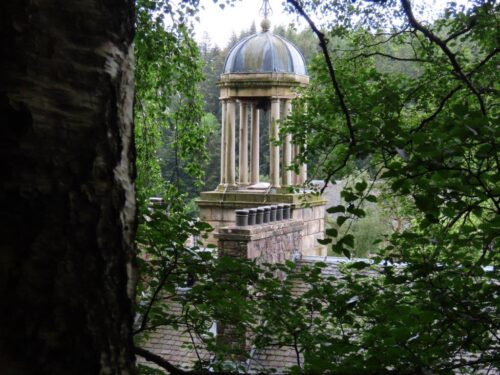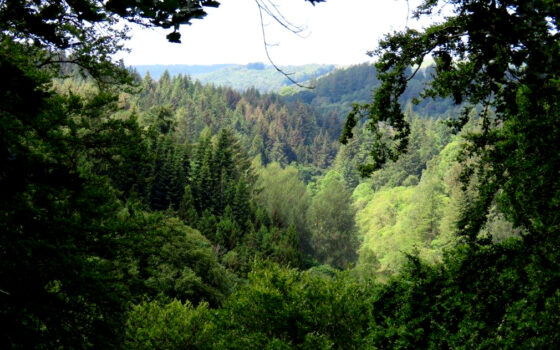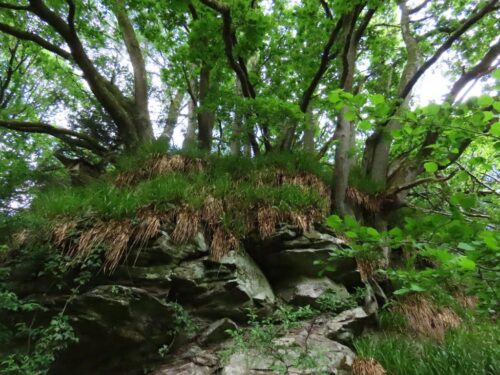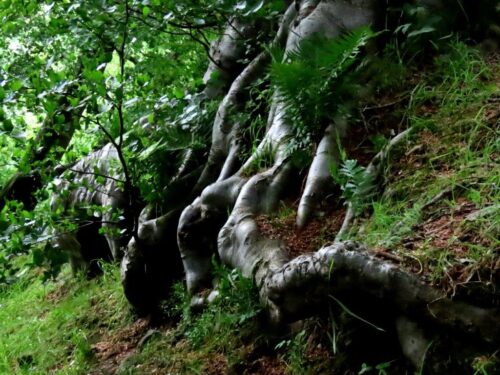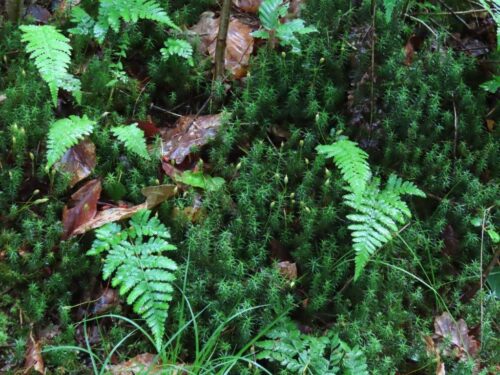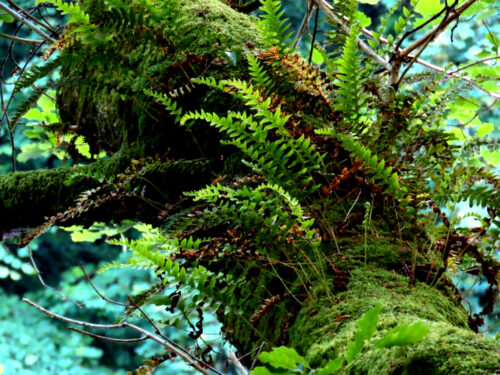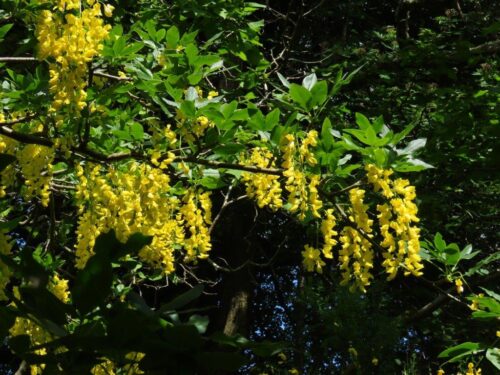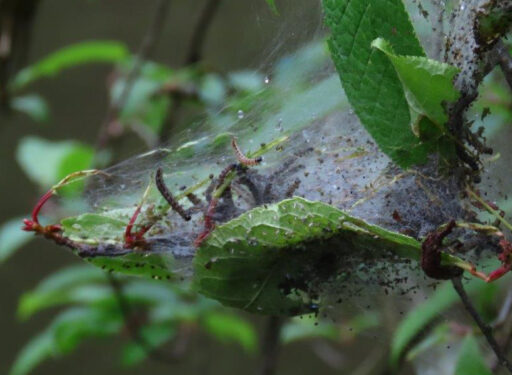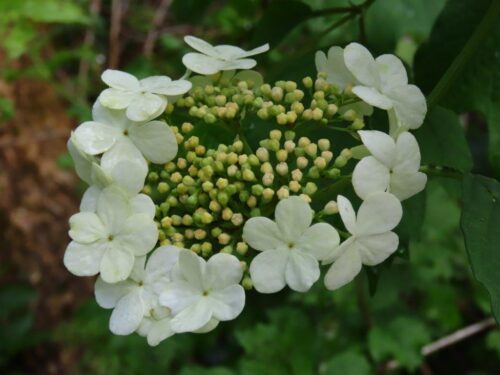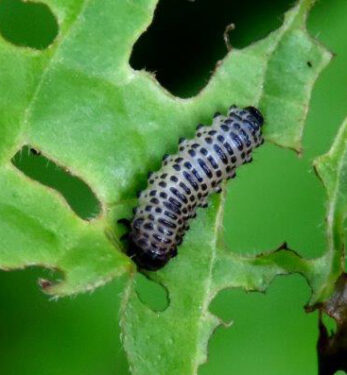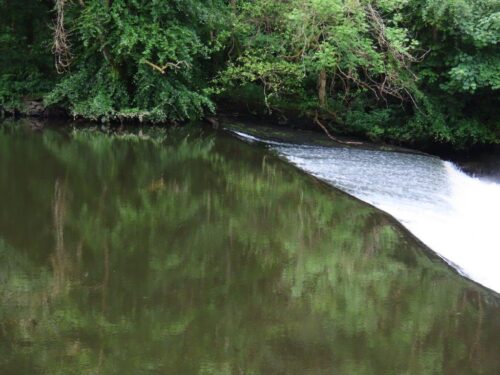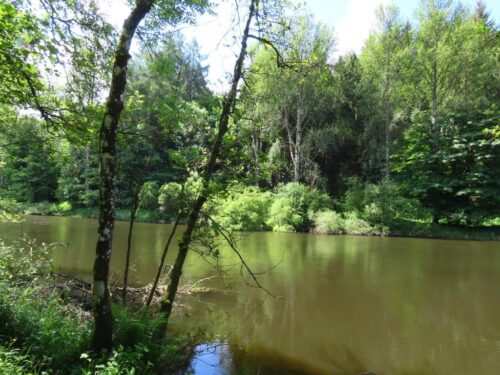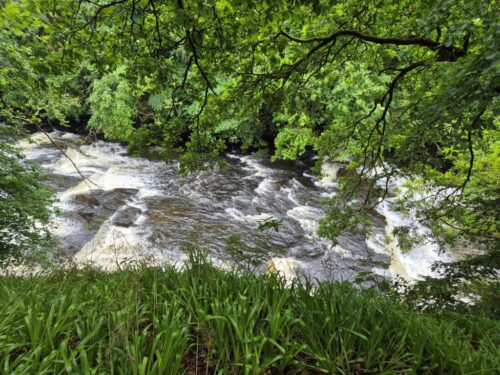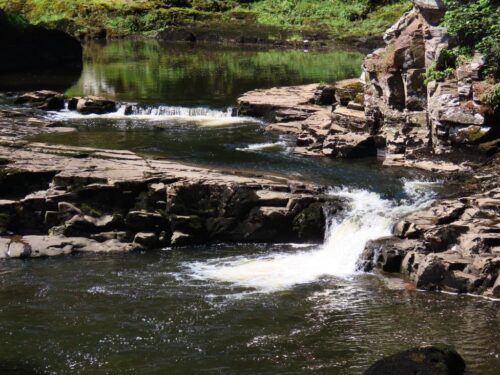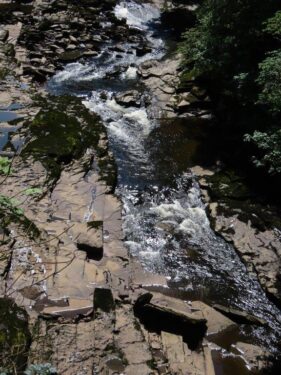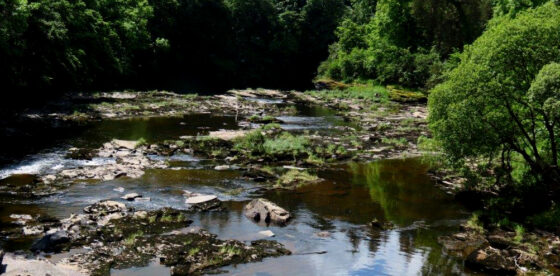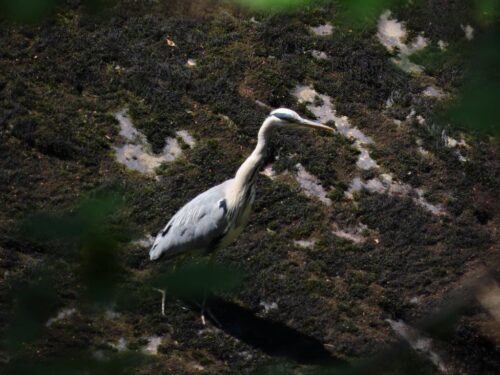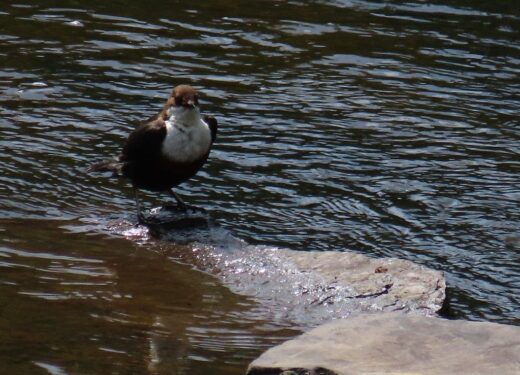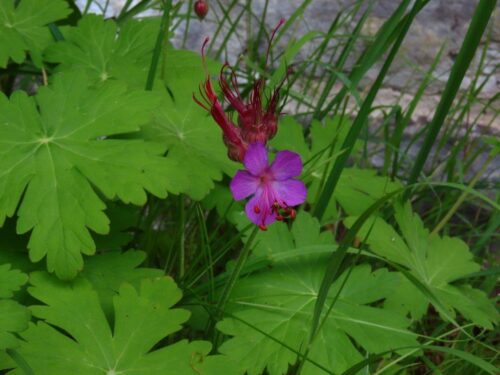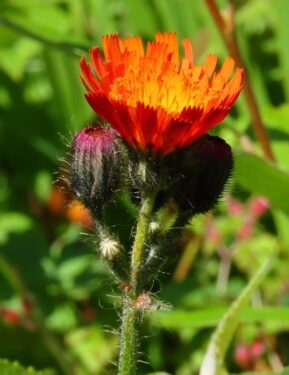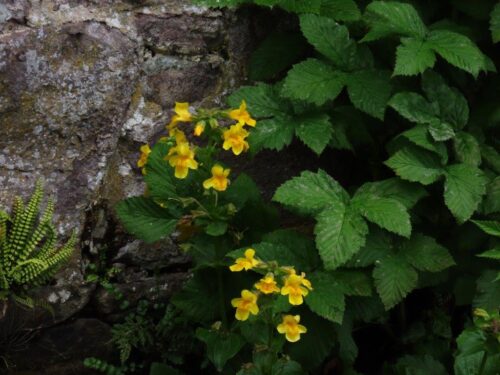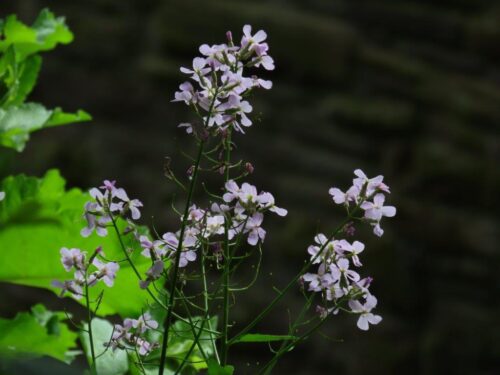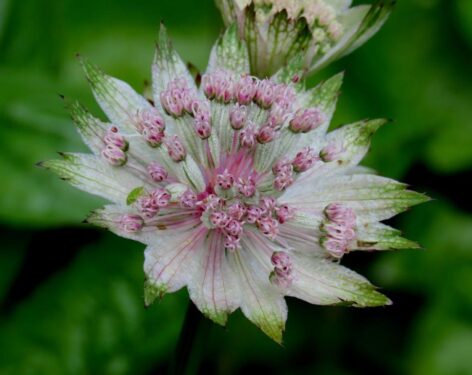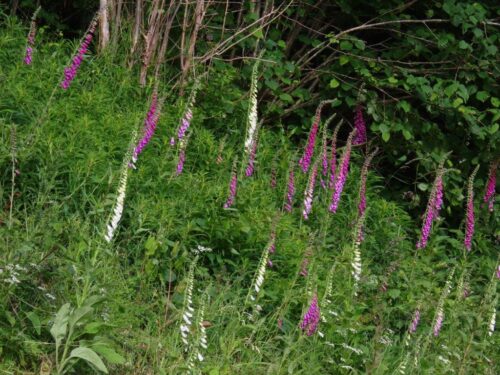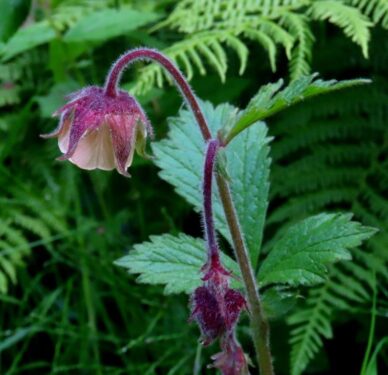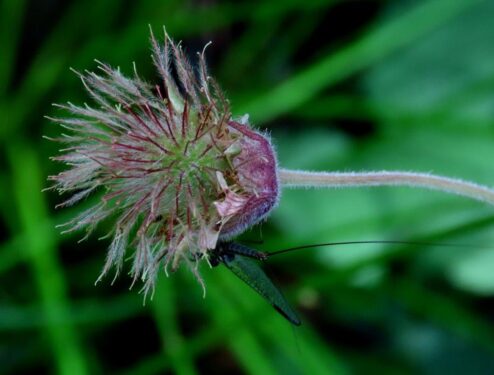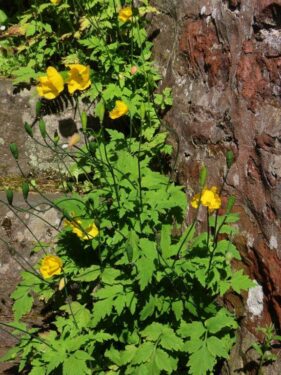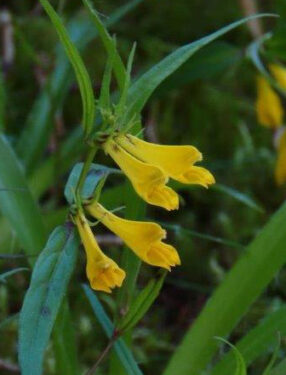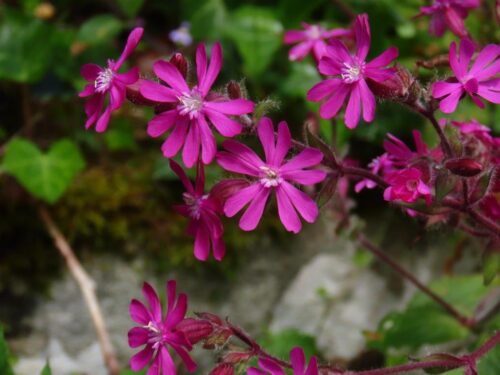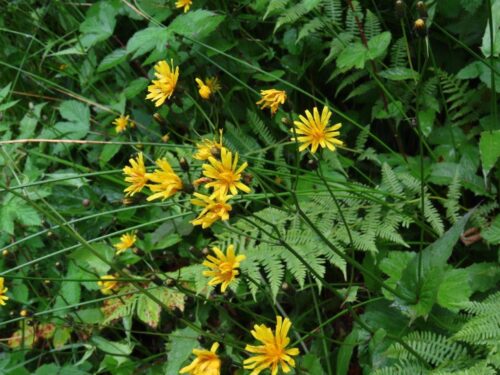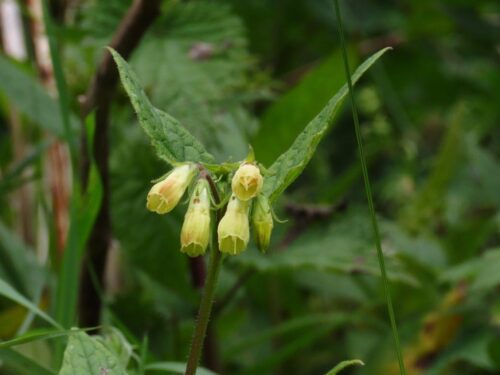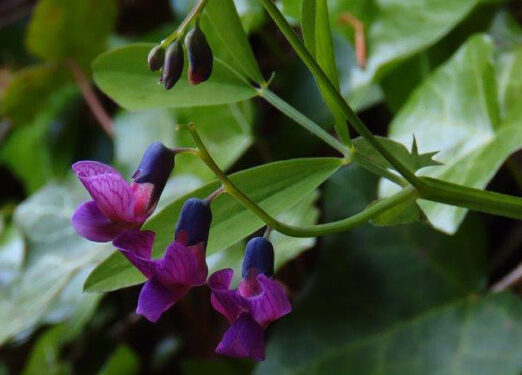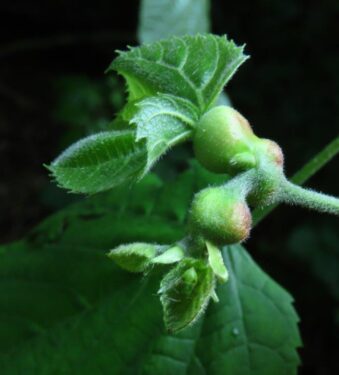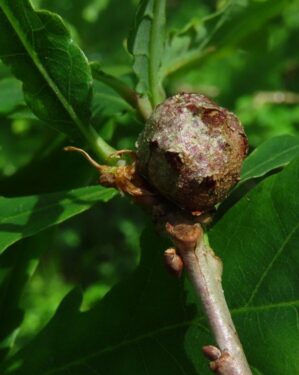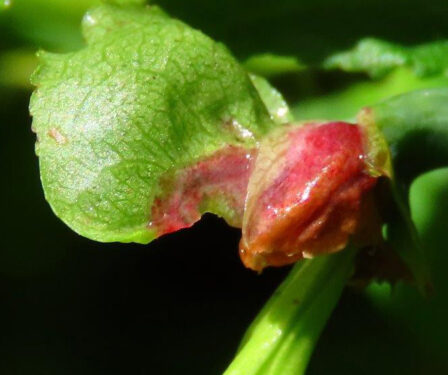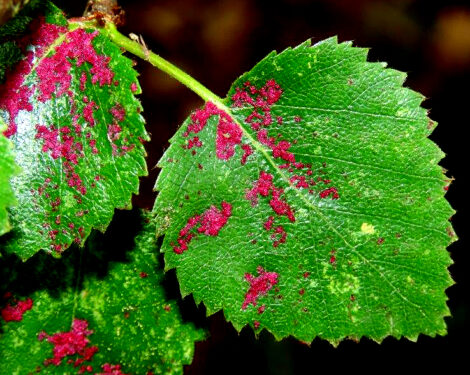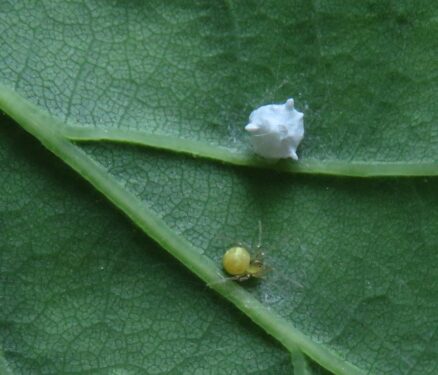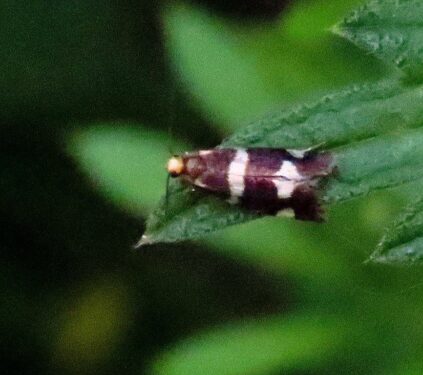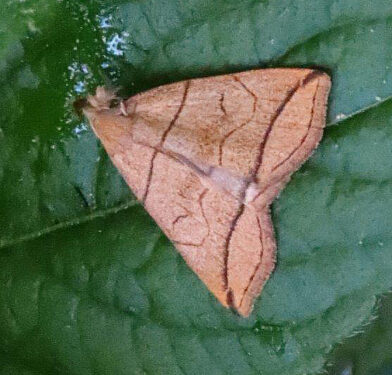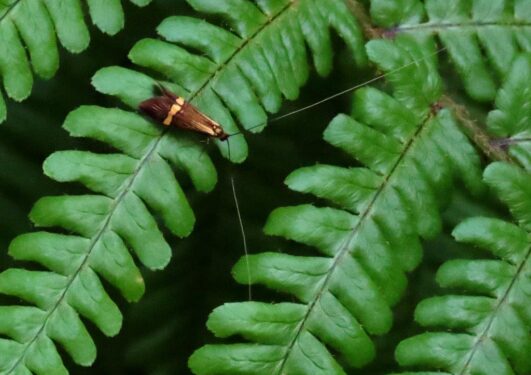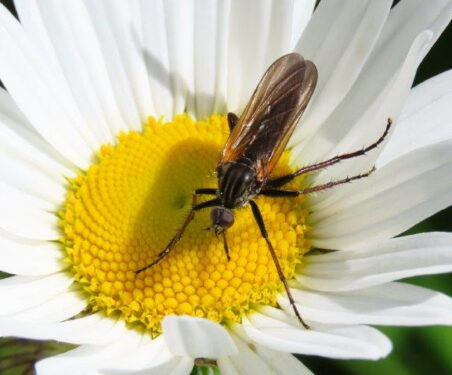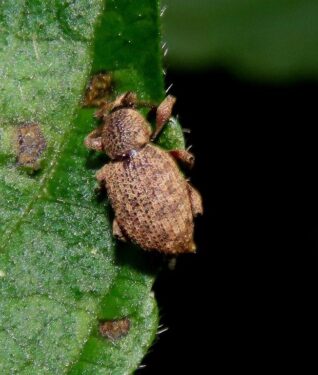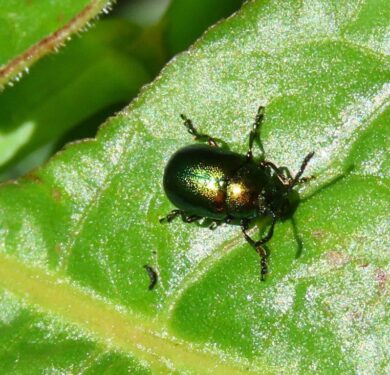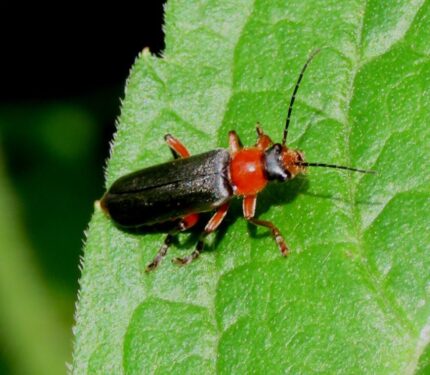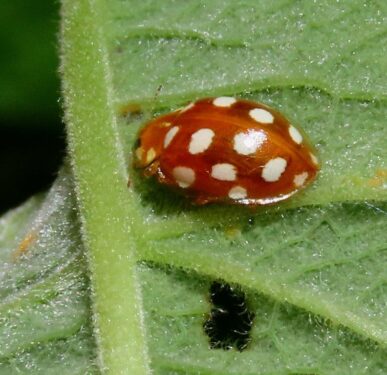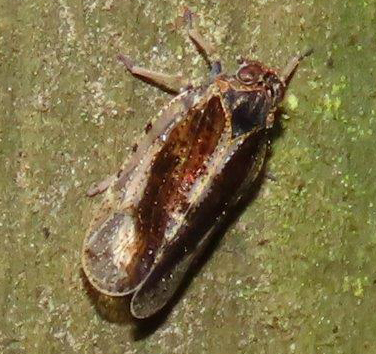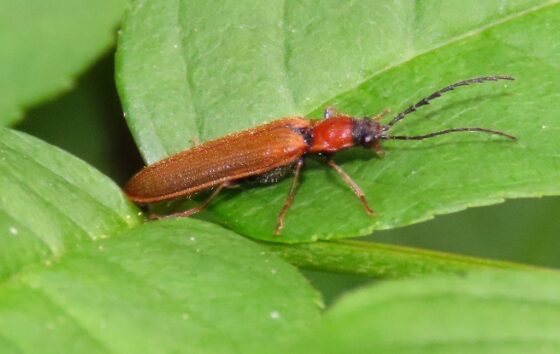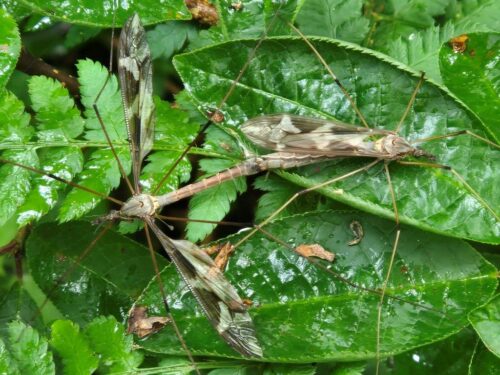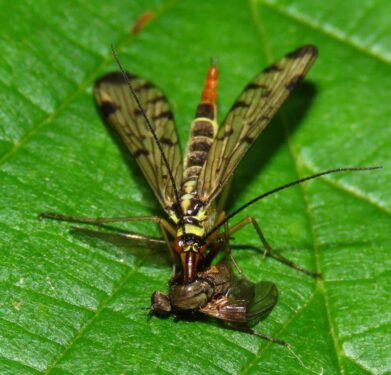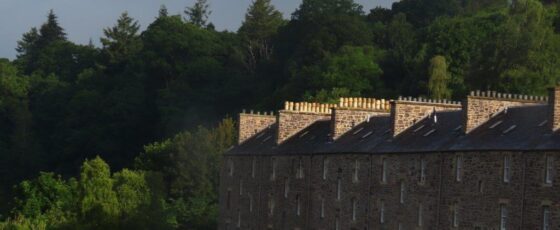As we left the station at Lanark, something was clearly afoot. Crowds, flags, bunting, revelry and general merriment, people in various states of undress despite the freezing wind – on a Thursday afternoon! We felt the transition from genteel Dunoon acutely. No hope of getting a drink as the pubs were so crowded, we headed on through towards New Lanark, gradually piecing together the fact that it was Lanimer Day, a very historic annual event (dating back to 1140) linked to beating the bounds of the ancient Royal Burgh (‘Land Marches’) and now serving as a general gala day. Everybody is involved, so as we headed out of town, it all became quiet, then quieter and, as we descended into New Lanark, quietest, apart from the constant reassuring rush of the tumbling Clyde.
First impressions of the World Heritage Site mill town was of amazing architecture, a good number of cars, but no people at all. It all felt vaguely Wicker Man, or like one of those post-apocalyptic movies where you wake up to find you are alone in the world …
The rushing waters give the clue to this place. All that natural hydropower could be put to good use, and was from 1786 to power cotton mills. The settlement includes homes for workers, due to the involvement of utopian philanthropist Robert Owen, one of the originators of the co-operative movement. The hotel is now actually in the main mill building.
Once indoors, we did find civilization, albeit cocooned from the outside world. A lovely room, directly overlooking the river, with Sand Martins swirling around in by now very pleasant sunshine. And lots of opportunity to explore the exterior of the stone buildings (all except the hotel closed because of Lanimer Day), the remarkable architecture bathed in light, throwing shadows as the sun started to set…
The mill and town are set within a lovely wooded landscape, clothing a really quite impressive rocky gorge. In part conifer plantation, in part old Oak and Beech, some with wonderfully gnarled roots and buttresses.
Mosses and ferns clothed the forest floor, that growth extending upward onto the boughs, in places luxuriantly coated with epiphytes.
There were of course other trees too, including flowering Laburnum (in a habitat resembling its native sites in European mountains), Bird Cherry (clad in the silken webs of Bird Cherry Ermine micromoths) and Guelder-rose nibbled to bits by Viburnum Beetle larvae.
The Falls of Clyde provided a whole series of dramatic glimpses of the fledgling river as we walked upstream from the mill, taking a leisurely approach to a walk that should only take an hour or so as the weather was sunny and warm(ish) for most of the day.
A Grey Heron waded in one section of the river, while a few Dippers and Grey Wagtails were feeding in the rapids. Jackdaws and Ravens made their presence known noisily, with Siskins wheezing and a few Spotted Flycatchers spotted flycatching.
The gorge and woodland had many interesting flowers. Closer to the town, there were lots of garden escapes (many of which are really useful for insects): Rock Crane’s-bill, Fox-and-cubs, Monkeyflower, Dame’s-violet and Masterwort.
Deeper into the nature reserve, native woodland plants predominated, including Foxglove, Water Avens, Welsh Poppy, Common Cow-wheat and Red Campion, the deep red flowers of the latter ‘undiluted’ by the genes of lowland White Campions.
And the best of the plants, ones that we are relatively or wholly unfamiliar with in Essex included Marsh Hawk’s-beard, Tuberous Comfrey and Bitter Vetch.
For the first time this summer we found ourselves in the presence of lots of galls. Most of them – those on Lime, Oak and Wych Elm – were common enough, but two were new to us and seemingly less frequent. On Bilberry the swollen reddened leaves are the result of infection by the fungus Exobasidium myrtilli, forming the blaeberry redleaf gall while the red pimply paint-patches on Silver Birch were caused by the mite Acalitus longisetosus. According to the National Biodiversity Network atlas, this is not previously recorded from that part of Scotland, being concentrated in the Highlands and also very thinly scattered in England and Wales. It was present on only one tree that we found, but is certainly very distinctive.
And we also found the nature reserve to be a a great place for a selection of insects and other invertebrates.
Among these, there were a few edge-of-range species and and ones not not previously recorded from that part of Scotland, including the lace-bug Tachycixius pilosus and click-beetle Denticollis linearis …
… while a couple of dramatic highlights included a mating pair of Giant Craneflies and a Scorpion-fly Panorpa germanica tucking into a dance-fly.
Given that the hotel is the only feeding spot without a considerable uphill walk, the restaurant provided us with very reasonably priced and excellent sustenance. I especially enjoyed the salmon medley, (the smoked component with such a delicate smoky-sweet cure) and chicken supreme with smoked cheese stuffing, while Jude liked the creamed goats’ cheese and figs and the chickpea curry.
On our second morning after a good breakfast we were taken by electric minibus (as befits a World Heritage Site) through Lanark – now approaching normality! – to the station for the third part of our break, in Glasgow. Having lived with the sound of the tumbling Clyde for two days, its absence was almost deafening….
POSTSCRIPT
Only when we got home and started working through the photos, entering them onto irecord, and checking their known distributions on the NBN Atlas did we come to appreciate how few of the things we found have ever been recorded at this site before, indeed how few of them have any records on the NBN anywhere near to New Lanark. WE have therefore prepared a complete listing for the record (see here Falls of Clyde), which will be sent to the Scottish Wildlife Trust who own the reserve.
Some of these have been pointed out in the main blog (see Exobasidium myrtilli, Acalitus longisetosus, Tachycixius pilosus and Denticollis linearis above). But others were more surprising, not least because they are so obvious and frankly unmistakeable, such as Meadowsweet Rust, the galls on Lime, Elm and Oak, and the larvae and munchings of Viburnum Leaf-beetle.
And how about the Gold-barred Longhorn moth. Very familiar to we southerners, if the NBN is up to date, our record is some 60km further north than it has ever been recorded before. Distributional data and changes in distribution are one of the main sources of information we have to underpin conservation policy and practice, so my plea is for anyone who visits an unfamiliar area, don’t assume that all you see is commonplace or already known. Record it for posterity: every data point is a step towards a better future.

